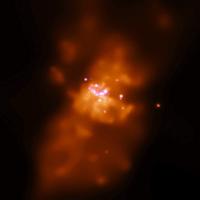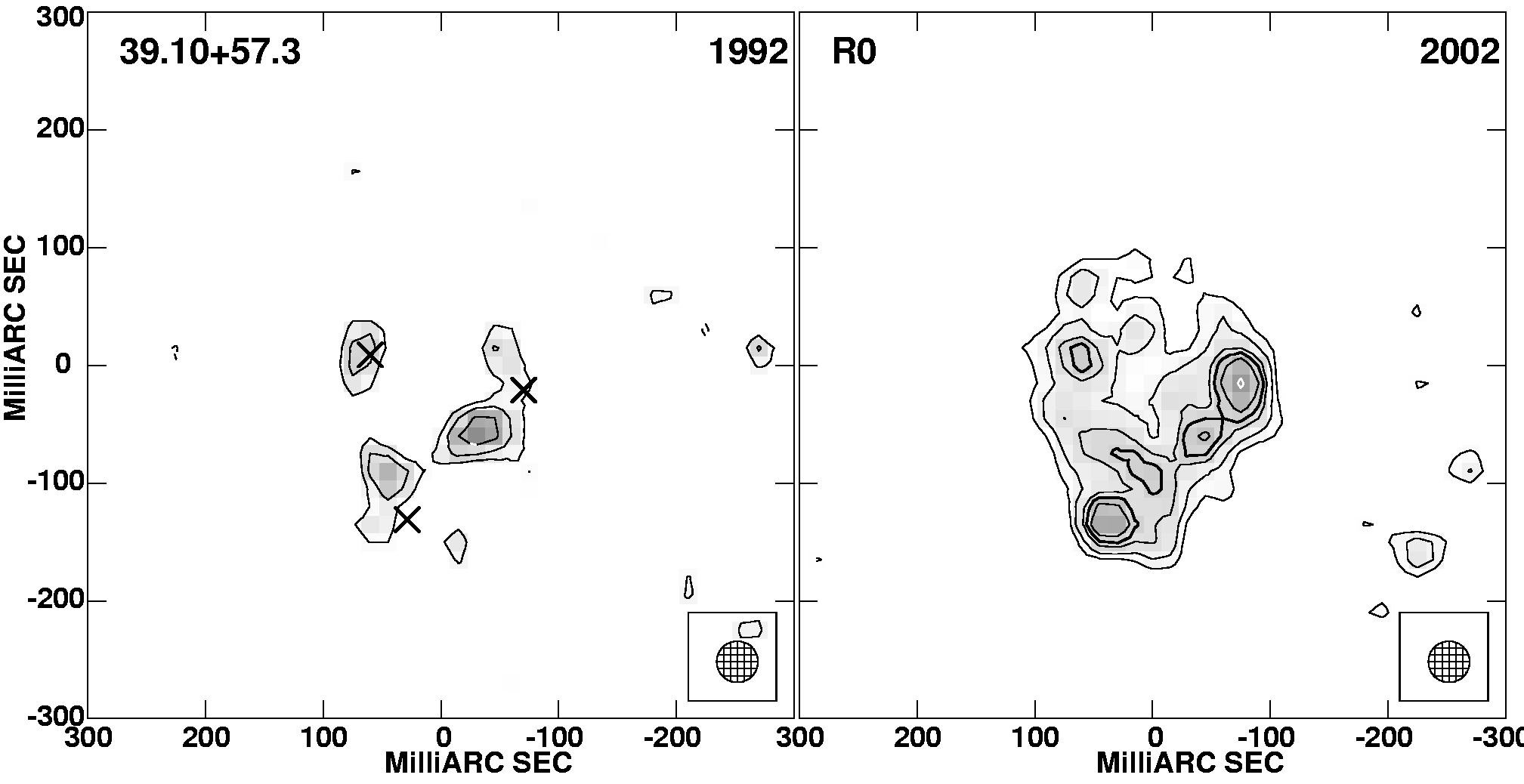Star Formation in Galaxies
The VLA and MERLIN are being used to image 10 nearby starburst galaxies 3 times per year for the next ~5 years. The objective is to detect new radio supernovae and radio supernova remnants, as well as monitoring the luminosity of existing components. It is particularly important to monitor M82 as no new supernova remnants have been seen for 20 years despite an estimated supernova rate of 0.1 per year. The project enables us to investigate methods of measuring star - formation rates in starbursts as well as studying the behaviour of radio supernovae in high pressure enviroments. The galaxy sample can be found here.M82

M82
Over 50 discrete sources are detected, the majority of which are supernova remnants, but with 13 identified as Hii regions. Sizes, flux densities and radio brightnesses are given for all of the detected sources, which are all well resolved with a majority showing shell or partial shell structures. Those sources within the sample which are supernova remnants have diameters ranging from 0.3 to 6.7 pc, with a mean size of 2.9 pc.
From a comparison with previous MERLIN 5 GHz observations made in July 1992, which gives a 9.75 year timeline, it has been possible to measure the expansion velocities of then of the more compact sources, eight of which have not been measured before. These derived expansion velocities range between 2200 and 10500 km/s.

SNR in M82


